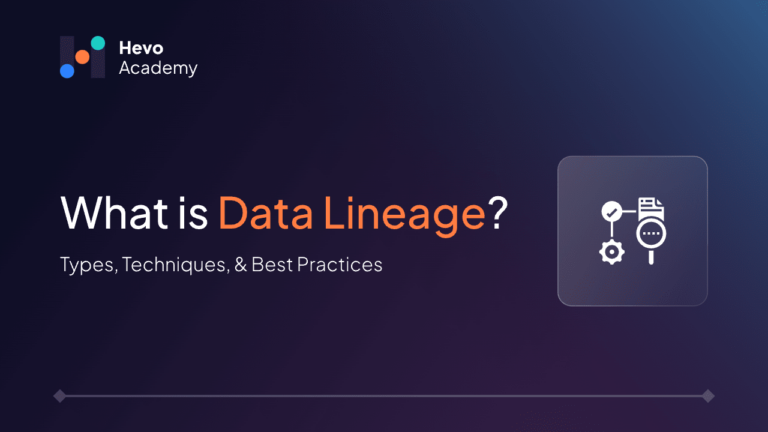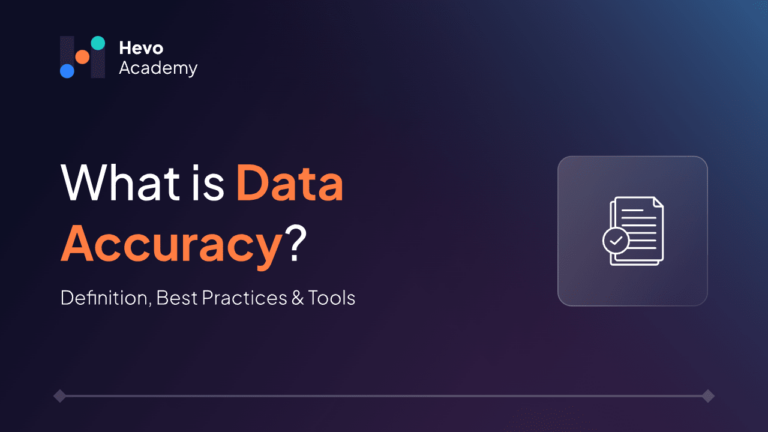Poor data quality can cost organizations an average of $12.9 million annually, according to Gartner. Data completeness is one of the major data quality dimensions, and it refers to how complete the data is or if it has missing values. Missing data points can lead to bias in decision-making, and hence, data completeness is absolutely essential to ensure that the data is accurate and reliable for consumption. In this article, we will cover what data completeness is, its importance, examples, and consequences of incomplete data, how to ensure data completeness, and the challenges faced.
Table of Contents
What is Data Completeness?
Data Completeness refers to a dataset containing all the useful information, without any missing or incomplete data. The dataset must have all the necessary attributes for analysis, so that there is no gap while using the data for decision-making purposes.
Imagine we have to analyse the stock market over a period of past 5 years, but the data for some weeks is lost due to a storage migration process. This missing historical data can skew the understanding of data patterns and volatility in the market. Consequently, it affects our ability to correctly analyse the market behaviour and predict future trends.
Why is Data Completeness Essential?
Incomplete or missing data can affect our ability to understand the data well and make reliable interpretations and decisions using that data. Let us suppose you are following a recipe book to bake a cake. You are mid-way through the process and suddenly realize one of the pages is missing. Now, you don’t have the entire list of ingredients required – and this missing page has stopped you from reaching the desired outcome of baking a cake.
Incomplete data can greatly compromise the overall quality of data, and using it can cost a company its money, resources and manpower. Incomplete data can affect the forecasting and planning, since we would not have all the necessary data points. Ultimately, it can lead to loss of customer trust, and affect an organisation’s reputation. Addressing data quality issues such as completeness is essential to achieve high-quality data, as incomplete records can compromise the reliability of data insights.
Examples of Incomplete Data and Their Consequences
Let us go through some more examples of incomplete data and how it can affect the data quality:
- Targeted Advertisements: Suppose a business launches a new product and wants to target a certain premium customer segment, but they are missing the contact details of more than half of their target base. This will affect their ability to reach out to their users, and adversely affect their campaign.
- Predictive Forecasting: Missing data points can skew the understanding of trends in data, and hence impact the ability to predict future trends and take decisions accordingly.
- Survey Data: Suppose you did a survey for understanding demographics better. But there was some issue due to which the survey lost the entries from people from one part of the city. This missing data is critical as it could lead to some parts of the city being underrepresented, and hence affect the demographic understanding.
- Healthcare: Missing health records or past medications/allergy data for a patient can have major consequences. It is absolutely essential for safe treatment of patients.
Looking to enhance your data management and ensure data completeness? With Hevo’s fault-tolerant architecture, you can trust that no data is ever lost. Plus, Hevo provides end-to-end encryption to guarantee your data remains secure at all times. Hevo offers:
- User-Friendly Interface: Simplifies data management with an intuitive interface, making it easy to monitor and manage data flows efficiently.
- Fault-Tolerant Architecture: Ensures no data is lost during migration or integration, maintaining data integrity.
- End-to-End Encryption: Protects your data with robust security measures, ensuring it remains safe throughout its lifecycle.
- Real-Time Data Sync: Offers seamless real-time data integration across various sources, enhancing data accessibility and completeness.
Thousands of customers trust Hevo for their data management needs. Join them and experience seamless data migration.
Get Started with Hevo for FreeData Completeness vs. Data Accuracy vs Data Consistency
Data completeness, data accuracy, and data consistency are different dimensions that are required to establish the quality of data. In case you are wondering how they are different from each other, let us explore this using the below table:
| Aspect | Data Completeness | Data Accuracy | Data Consistency |
| Focus | Ensures every important data point is available | Ensures data is correct and represents real-world scenarios | Ensures data is uniform across different systems |
| Examples | All sale transaction data must be recorded | Customers’ transaction data must be correctly entered | The items’ availability and prices must be the same across all systems |
| Key Metrics | Number of NULL values or missing fields | The error rate in prediction or validation checks | Number of discrepancies across systems |
| Impact | Incomplete analysis, Incorrect trend forecasting | Incorrect and unreliable decision-making | Confusion and conflicts while decision-making |
| Risks | Loss of insights, Decreased data usability | Loss of resources, Affects decisions and reputation | Mistrust in data systems, Affects data integration |
| Mitigation | Data audits, Checks and protocols at data entry points | Data cleansing, Data verification against reliable sources | Data integration and synchronization techniques |
How to Ensure Data Completeness?
Now that we have understood what data completeness is along with its importance let us see how we can ensure whether a given dataset is complete or not:
- Data Profiling: Data profiling tools can analyze patterns, distributions, and missing values within your datasets. It helps uncover redundancies and anomalies in the data.
- Data Sampling: You can use random sampling to select representative subsets within your data to systematically estimate data completeness.
- Statistical Methods: You can use statistical tools to get the number of null data values, minimum and maximum values, unique value count, missing value count etc to get the holistic view of your data and measure its completeness.
- Validation at Data Entry: Systematic validation processes can help you detect incomplete data at the point of ingestion. Validation techniques, like mandating a certain form field to be completed, can help reduce chances of human error during data entry.
- Data Visualization: Visualization tools can make it easier to identify patterns of data and, hence, any missing values through outlier and anomaly detection. This helps you to intuitively grasp and address any data gaps.
- Automated alerts and monitoring: Automated monitoring tools can send alerts when there are any deviations from expected data completeness levels. This helps to identify and rectify any data issues quickly.
- Data Enrichment: In cases where data completeness is compromised, you can employ data enrichment to fill in the missing data points by integrating external data sources or using extrapolation techniques to fill in the missing values based on existing data.
Challenges in Ensuring Data Completeness
Let us now go through some of the common challenges faced while trying to ensure data completeness:
- Data Entry Errors: Errors during data collection and data entry due to faulty equipments or even human errors, can lead to missing or incomplete data.
- Data Integration Issues: Integrating data from multiple sources can cause compatibility issues with respect to the data type and structure, leading to incomplete data.
- Data Quality Control: Inadequate data quality control can lead to incomplete data if errors go undetected during the data collection or processing phase.
- Obsolete Data Systems: Outdated data systems may not support modern data formats or advanced features, which may lead lead to this data appearing as missing in the final dataset.
- Lack of Data Governance: Lack of clear data governance policies can result in data ownership issues, and poor data management practices. By clearly defining ownership, you can instill a sense of responsibility, ensuring that data is complete and accurate.
- Insufficient Feedback Loops: You must get feedback from stakeholders, and ease the process of reporting discrepancies in data, to ensure that data quality is maintained.
Conclusion
In this data-driven world, where organizations are increasingly using data for making business decisions, it is absolutely essential to ensure that the quality of data is good and reliable for consumption. Incomplete or missing data can lead to a distorted understanding of the data, impact our ability to make future predictions, and affect decision-making. This can ultimately cause a potential loss of trust, competitive edge, and customer satisfaction. Hence, we must employ techniques like data sampling and profiling, automated monitoring and alerts, outlier detection through visualizations, and other data quality checks to ensure data completeness. This will not only help the businesses improve their data analysis and forecasting but also help them grow and make their operations more efficient.
FAQs
1. How do you ensure data completeness?
We can ensure data completeness by employing techniques like data sampling and profiling, automated monitoring and alerts, and outlier detection through visualizations. We can also use some third-party tools as well as implement regular audits and data quality checks for ensuring data completeness .
2. What is the difference between data completeness and data accuracy?
Data completeness checks for missing elements and ensures that the entire data is recorded and available. Data accuracy, on the other hand, ensures that the available data is accurate and reflects real-world behavior.
3. What is an example of data completeness in OTT customer data?
OTT customer data is said to be complete if it contains fields like customer name, age, contact information, payment and subscription details, languages, preferred genres, past movies watched, etc, while also ensuring that the details are readily available and are not missing.
4. What is an example of incomplete data?
An example of incomplete data in the field of IoT devices is missing sensor readings for a period of time. Suppose you have a smoke sensor that alerts your smartphone if smoke has been detected while you are out. If the sensor stops working for a while and the data is missing, it can impact the security of your house.






